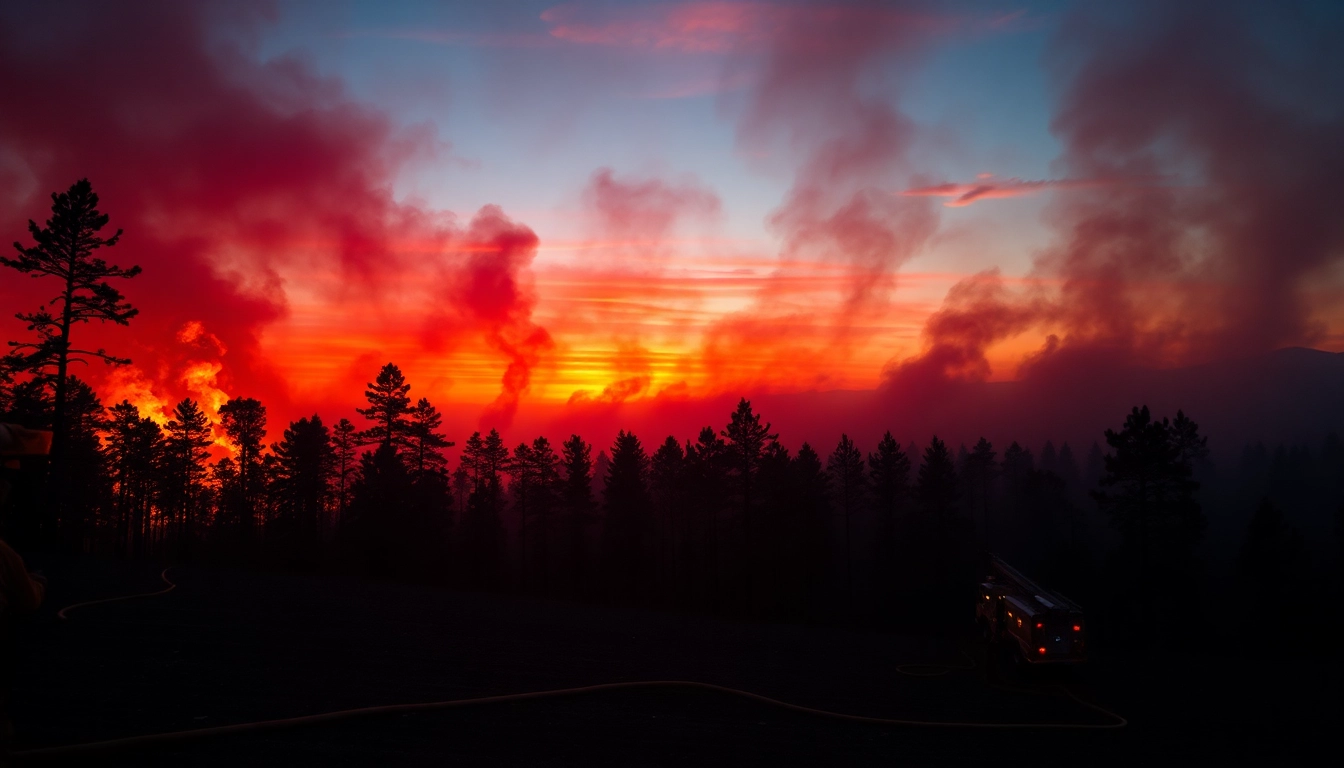Introduction to Wildfire Events
Wildfire events have become a prominent and pressing concern in both natural and urban environments. Understanding the dynamics of fire behaviors, their causes, and effects is crucial to developing effective management and mitigation strategies. In recent years, these events have garnered attention as their frequency and scale have increased, drawing connections to climate change, land management practices, and human activities. To fully engage with this important topic, it is essential to explore what wildfire events truly mean and the overarching factors that drive them. Knowledge on this subject is more pertinent than ever, especially as we grapple with the impacts and necessary responses to wildfire events.
Definition of Wildfire Events
Wildfire events can be defined as uncontrolled fires that spread rapidly through vegetation, often exacerbated by environmental conditions such as wind and drought. These fires can be initiated by natural causes, such as lightning strikes, or human influences, including negligence and arson. The characteristics and impacts of wildfire events—such as the area consumed, the intensity of the burn, and the duration of the event—vary significantly based on geographical, climatic, and ecosystem factors.
Historical Overview of Wildfire Events
Historically, wildfire events have been part of Earth’s ecological processes, playing a critical role in various ecosystems. Indigenous peoples utilized fire as a land management tool long before modern firefighting techniques were developed. However, the increasing encroachment of human habitats into wildlands, combined with climate fluctuations, has resulted in more frequent and more destructive wildfires in contemporary times. Noteworthy historical events, such as the Great Fire of 1910 in the U.S. or the 2019–2020 Australian bushfire season, illustrate just how devastating these occurrences can become.
Importance of Understanding Wildfire Events
Understanding wildfire events involves recognizing their ecological benefits and dangers. While wildfires can renew ecosystems, facilitating new growth and supporting biodiversity, they also threaten human lives, property, and air quality. Comprehending these multifaceted issues is crucial for developing informed policies and practices in land management, urban planning, and disaster preparedness.
Causes of Wildfire Events
Natural Causes of Wildfire Events
Natural causes of wildfire events often include lightning strikes and volcanic activity. Weather conditions, such as extreme heat and prolonged droughts, can also contribute to the initiation and spread of these fires. For example, forests in drought-stricken areas are more flammable, making them susceptible to induced ignition. Knowledge of these natural influences aids in predicting potential wildfire risks and developing management strategies.
Human-Induced Causes of Wildfire Events
Human-induced causes of wildfire events account for the majority of reported incidents. This includes agricultural burning, fireworks, equipment usage, campfires, and even arson. As urban development encroaches on wildland areas, human activities pose a significant risk. Public education around responsible outdoor conduct and fire safety can mitigate such risks effectively.
The Role of Climate Change in Wildfire Events
Climate change has emerged as a significant factor influencing wildfire events across the globe. Rising temperatures, extended dry spells, and changing precipitation patterns are creating ideal conditions for wildfires to ignite and spread. Numerous studies show a direct correlation between increasing greenhouse gas concentrations and heightened wildfire risks, emphasizing the urgent need to address climate change as part of wildfire management strategies.
Impacts of Wildfire Events
Environmental Consequences of Wildfire Events
The environmental impacts of wildfire events can be profound. On one hand, they can lead to habitat destruction, soil erosion, and loss of wildlife. On the other hand, they can rejuvenate ecosystems by clearing dead vegetation, allowing sunlight to reach young plants, and stimulating seed germination in fire-adapted species. Understanding the dual nature of these impacts helps in developing balanced ecological management plans.
Economic Costs Associated with Wildfire Events
The economic toll of wildfire events is staggering. Costs related to firefighting efforts, property damage, and loss of livelihood can reach billions of dollars annually. Additionally, businesses that rely on natural resources, such as tourism and agriculture, are also severely affected. Economic assessments and cost-benefit analyses are essential for justifying investments in prevention and preparedness programs.
Health Effects Linked to Wildfire Events
Wildfire events also present significant health risks. The smoke and particulate matter released can cause respiratory issues, cardiovascular diseases, and mental health challenges for affected populations. Vulnerable groups such as children, the elderly, and those with preexisting health conditions are at greater risk. Addressing these health implications requires proper public health planning and emergency response strategies.
Preparedness and Response to Wildfire Events
Community Preparedness for Wildfire Events
Community preparedness is essential in reducing the impact of wildfire events. Creating fire-adapted communities involves planning, education, engagement, and resources. Residents should be educated on creating defensible spaces around their homes, the importance of emergency plans, and evacuation routes. Community drills and collaborative efforts with local firefighting agencies can enhance readiness.
Government Response Strategies to Wildfire Events
Government entities play a critical role in wildfire management through regulatory frameworks, funding, and firefighting resources. Strategies may include controlled burns, creating buffer zones, and investment in firefighting infrastructure. Policies that address land use and community planning are also vital in fostering resilience against wildfire events.
Technological Innovations in Addressing Wildfire Events
Technological advancements have revolutionized wildfire management practices. Drones and satellite imagery provide real-time data for fire prediction and monitoring. Machine learning algorithms can analyze climate data to enhance forecasting accuracy. Moreover, innovative firefighting techniques, including fire retardants and aerial firefighting technologies, have proven effective in controlling wildfires.
Future Trends in Wildfire Events
Predicted Changes in Wildfire Events Frequency
Future trends indicate a concerning rise in the frequency and intensity of wildfire events, driven largely by climate change. Projections suggest that regions previously unaffected by wildfires will increasingly face threats as temperature and precipitation patterns shift. Adaptation strategies must be prioritized to cope with these anticipated changes.
Adaptive Strategies for Mitigating Wildfire Events
Developing adaptive strategies for mitigating wildfire events is essential. These may include enhancing landscape resilience through reforestation, employing sustainable agricultural practices, and conserving biodiversity. Collaboration between government agencies, scientists, and communities is key to creating effective mitigation plans tailored to local conditions.
The Role of Education in Managing Wildfire Events
Education plays a vital role in wildfire management and can significantly influence community resilience. Public awareness campaigns focusing on fire safety, land management practices, and emergency preparedness can encourage proactive behaviors. Schools, local organizations, and media outlets can collaborate to disseminate this critical information, fostering a culture of preparedness.



